Are you looking for true pearls for your garden? Pay attention to the varieties of decorative almonds. Everyone knows about delicious nuts, but few people know that this plant has a high decorative value. During the flowering period, a small tree or shrub is completely transformed. All shoots are abundantly covered by scattering white, white-pink, pink fragrant colors. Forget such a tree is simply impossible. In this article we learn whether it is possible to grow almond decorative on the site, how to care for this beautiful culture.
Almond decorative - Description
- Almond can grow in the form of a small church or compact shrub. Belongs to the nature of the plum and the family of pink. Almond decorative tree can be grown on a strain. The almond decorative bush can be raised by the formation of the crown.
- Mountain decorative varieties of almonds consider the Mediterranean and Central Asia. The plant was also widespread in China, California, Czech Republic, Slovakia, in South Moravia.
- Almond decorative - shrub, reaching a height of up to 2-3 meters.
- The crooh almond decorative has a compact ball shape, which gives a shrub of even greater decorativeness. If the almond decorative grown on the strain, then he grows by a low church.
- Minda leaf leaves, leathery, lanceal, dark green, have a slightly saw edge.
- On the 4-5th year after landing, decorative almond blooms. One who at least once seen the flowering of decorative almonds will not be able to forget this delicious spectacle. Numerous white, white and pink flowers and pink colors enhance the shrub lush cloud. Flowers have many petals, can be terry or simple depending on the variety of decorative almonds.
- The fruit of decorative almonds is most often incredible, but also carries decorative value as the entire bush. It is represented in the form of a suede octurian, within which the bone is located.
- Almond decorative is a rather unpretentious culture, which, with proper care, can "live" to 100 years. The shrub is well tolerates harsh winters, drought.
- Almond decorative - valuable honey. Consider this fact if you are going to plant such a shrub in your site. During the flowering period, which lasts about 3 weeks, the almonds will attract the bees from all over the county.
- Close relatives of almond decorative are pear, quince, plum, rose, apple tree, Sakura, Rosehip, Tern, Alycha.
Almond decorative - varieties and types
Almond steppe decorative
Almond steppe is also called almond low or bobulk. Shrub is a leaf fall, capable of reaching up to 1.5 meters in height. Strengthening shoots form a crown of a spherical shape. The bark is painted in a grayish-red color. Lancing leaves, with a leathery surface, are able to reach 6 cm long. The top of the leaves is more dark than the bottom. The flowering of this type of decorative almond is not a duration - admire incredible colors for 7-10 days. The advantage of steppe almond is that, together with a decorative value, he carries practical benefits, since its fruits are edible. The almonds of steppe almonds are painted in a bright pink color or snow-white, depending on the shape, reach up to 3 cm in diameter in the blossoming form, exude a bitter aroma. There are 2 forms of almond steppe - white-colorful shape and hesslera. Among the most popular grades of steppe almonds grown in the middle lane can be transferred as follows:
- Pink flamingo. This is the almond pink, decoratively blooming. This grade of the bobulist uses incredible popularity among landscape designers and gardeners. The flowering period occurs earlier than the remaining species of steppe almonds. Despite the fact that the flowers are very small, it is impossible to take a look from the flowering shrub. Bright pink color, terrace of flowers and their abundance emphasize the highest decorative value.
- Pink fog. This steppe almond variety is similar to a pink flamingo. If the duration of flowering is more important for you, then plan the shrub in a half. If you want to admire more lush flowering, inferior in duration, choose a plot under direct sunlight. Pink flowers, about 2 cm in diameter.
- Dream. Popular steppe almond grade is suitable for growing on solar and open areas. May grow in a half, but bloom will not be so bright. Beautiful pink flowers are reached in diameter 2-2.5 cm. Shrub should be protected from a strong wind.
- Annie. This steppe almond grade enters the flowering period in April. Flowers are painted in white-pink color and have a diameter of about 2.5 cm. The fruits of the shrub are edible, have a characteristic aroma and a sweet taste, begin to ripen in September. Mature walnut reaches up to 5-6 cm long.
- White sail. Shrub blooms with snow-white flowers, dense every escape. Flowers are small - up to 10 mm in diameter. The advantage of this steppe almond variety is that the shrub has a high drought resistance.
Almond Georgian decorative
- Georgian almond has many similar devils with almond steppe. Its leaves are characterized by larger sizes - up to 8 cm long.
- This type of decorative almond received its name in honor of the area of \u200b\u200bdistribution - the slopes, forest edges in Georgia.
- Almond Georgian reaches 1 meter in height and has many root processes.
- Green pubescent fruit begin to ripen in September on shrubs older than 7-9 years.
- Shrub is transformed during flowering, like other varieties of decorative almonds. His shoots become thickly covered with bright pink flowers.
- Almond Georgian is very often used by breeders due to its characteristics. The plant drought-resistant, frost-resistant, has a high resistance to disease and pests.
Almond Larbura decorative
- Almond Larbura is one of the most popular varieties of decorative almonds. Shrub rarely exceeds a height of 1 meter.
- The arale of the spread of Almond Larbura is Altai, Tarbagaytai, where the shrub can be found in the form of thickets in the meadows, foothills and slopes.
- Croon almond Larbura spread and loose.
- Almond Bark Larbura painted in a reddish gray shade.
- Leaves Lebura almonds have a lanceal shape, dark green color and rather large size.
- The advantage of Almond Larbura is that shrub blooms before many other varieties of decorative almonds - in May. Bright pink flowering lasts for 2-3 weeks.
- The popular grade of Almond Larbura is Fayer Hill. Flowers have a spectacular bright red-pink color and reach up to 3 cm in diameter.
- Almond Larbura fruits for the 9-10 year after landing, but very weak.
- Most of the grades of almond ice-resistant are highly resistant to adverse climatic conditions, as well as to pests and diseases.
Almond Petunnikova decorative
- Middle Midnal Motherland Petunnikov is Central Asia, where the shrub is growing on stony, mountain slopes, mandrels can form.
- Almond Petunnikova is considered a dwarf culture. The diameter of the crown rarely exceeds 80 cm, and the height of the bush itself is 100 cm.
- Sewing from this variety of almonds are a reprehension, sometimes spread to the sides, covered with a gray-made crust.
- Leaves at almond Petunnikov have a lancing shape, a slightly saw edge, green color.
- During flowering, the shrub acquires special decorativeness. Flowers are single, have a juicy pink color.
- Almond Petunnikova begins to bear fruit on the 6th year after landing. The fruits are enclosed in a dense mast peel of a redhead.
Three-blade almond decorative
China's maternity hospital is considered China. The plant is very often called Chinese terry plum, Louisiana, Japanese cherry. The decorative value of this variety of almonds is difficult to overestimate. Almond Three-Blade grows in the form of a tree and is able to reach up to 3 meters in height. Prefers to grow on well-lit areas. Croon Almond Three-Badded Spicy. How blooms decorative almonds? The flowering period comes in mid-May. Flowers can be painted from light pink to a rich-raspberry shade depending on the variety. Approximately 2-2.5 weeks bloom ends and on shoots blooming leaves having a three-bladed form.
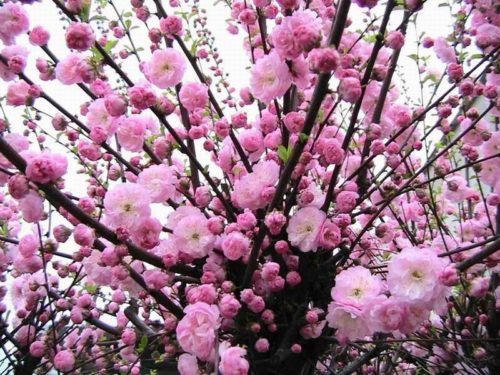
There are a large number of hybrid grades of almonds three-blade, among which the following most decorative varieties can be distinguished:
- Snow Wormura is a hybrid variety of decorative almonds, a distinctive feature of which is a change in the colors of its color. At the beginning, large terry flowers have pink color, gradually changing it on cream.
- Kievskaya - three-blade almond grade, the bloom of which is incredibly colorfully. A particularly spectacular shrub looks at the moment when the flowers bloomed, but there are no leaves yet. The duration of the flowering of almond variety Kiev is about 7 days.
- Captivity is a high decorative almond grade, the duration of flowering which is about 2-2.5 weeks. Pink terry flowers are achieved in diameter 4 cm.
- Ruslana is another interesting hybrid variety of three-blade almonds. Flowers change painting with beige on snow-white.
Decorative almonds - Photo
How blooms decorative almonds
The flowering of decorative almonds is what made this culture so popular among gardeners and breeders. Most varieties of decorative almond bloom occurs until green leaves bloom. It is this that creates the illusion that the shrub is enveloped by a bright and weighty cloud of flowers. Flowers can be snow-white, gentle pink, white-pink, crimson, bright pink. In China, for example, the flowering of decorative almond is associated with female beauty. In ancient Rome, almonds was a symbol of fertility. In many countries of the world, the beginning of the flowering of almonds means the arrival of spring.
Almond decorative - shrub. Landing
Step 1. Choose time to land the almond decorative
If you still decided to plant almond decorative in your site, you can do it either in the spring or in the fall:
- For almond decorative landing in autumn, many gardeners are considered the most preferable. Saplings are planted in the ground after the end of the leaf fall;
- spring landing almond decorative should be produced when warm weather is installed. Sudden frosts at this time can negatively affect the rooting of the shrub.
Step 2. Choose a place to land the almond decorative
- Most varieties of decorative almonds prefer to grow on well illuminated, elevated, protected from wind and draft place. An ideal place for planting this spectacular shrub will be the southern part of the garden, where almonds will spend most of the day under sunlight. Some varieties of decorative almond can easily carry the half.
- When choosing a place for planting a decorative almond, it is worth considering the location of other almond shrubs. If you land the whole group, then the minimum distance between shrubs should be about 1.5-3 meters depending on the variety of almonds.
- When choosing a place to fit the almond decorative, avoid low polls, as cold air masses will be stated, which can negatively affect the appearance and health of the almond decorative.
- If you have a lot of stones on your site, then do not be afraid to plant almond decorative. In natural nature, this shrub is easily growing on similar stony areas, mountain slopes.
- When choosing a place to plant decorative almonds, it is necessary to take into account the depth of groundwater. Shrub does not like wetlands, where groundwater flows closer than 1.5 meters from the ground surface. Choose a sublime area.
Step 3. Choose the soil for almond decorative
To make decorative almonds to show maximally, it is necessary to take into account some almond preferences in the characteristics of the soil:
- most varieties of decorative almonds prefer to grow on fertile and lung soils, on thin or squealed soils;
- decorative almond prefers to grow on soil with a pH from 4.5 to 7.5;
- avoid landing of decorative almonds in severe, clay, acid or wetlands;
- if the soil is planned to plant a decorative almond, fertilize with a compost, then blooming the shrub will be abundant and more colorful.
Step 4. Landing technology decorative almond
If the place for planting a decorative almond is chosen, then you can proceed to the preparation of the landing pit and the planting process. Consider this in more detail:
- prepare a place to land the almond decorative. To do this, remove plants that can close almond almonds for a long time during the day;
- it is recommended to plant 2-3 almond seedlings decorative, as this culture needs to be disturbed;
- bring out the landing of decorative almonds better in the early morning either after 17.00 days when the sun is not already bright;
- drop the landing yum in a depth of about 30 cm. Sizes of the landing pit are approximate, focus on the size of the seedling. For landing, it is best to choose 1-year-old copies;
- at the bottom of the landing pit, you must pour a good drainage layer of broken bricks or rubble;
- then pour on the drain layer of sand;
- in the center of the landing pit it is necessary to establish a support that should rise above the surface of the Earth is not less than 0.5 meters;
- to fill the landing pit, mix the garden ground, leafy land, sand and humus;
- the roots of the seedling of decorative almonds before omitting into the landing pit, you need to suck into the clay tank;
- install the seedling in the cent of the pit, holding it with one hand, and the second gradually fill the pit with the soil. Seedling periodically must be shaken that the airspaces between the roots are uniformly filled with soil;
- the root neck of the almond decorative when landing does not need to plunge. It should be at the level of the earth's surface;
- after landing, almond decorative must be pouring. Under one bush will need 1-1.5 bucket of water;
- tighten the priority circle around the young almond so that the mulch does not come into contact with the root neck.
Almond decorative - shrub. Care
Watering almond decorative
Like most other decorative shrubs in the garden, almonds require watering.
- Water almond decorative when the earth around the shrub will be dry at a depth of 1.5-2 cm.
- Approximately one shrub of almond decorative requires 1 water bucket 1 time per week. But it is always necessary to focus on the humidity of the soil, on the weather conditions.
- The excess of moisture can cause the root neck, which can provoke the death of the plant.
- After irrigation, it is advisable to hold a weeding and, if required, the removal of weeds. The rolling circle should always be "tidy." If the almond decorative is still young, then the soil is loosened to a depth of about 5-7 cm. For more adult plants, it is permissible to the depth of about 10 cm.
- It is impossible to water almond decorative with cold water.
Decorative almond feeding
In the matter of fake for the almond plant, the decorative opinions of the gardeners were divided. Some advise fertilizer 1 time per season as a solution of superphosphate (30 grams of 10 liters). If the site is too meager, then you can fertilize almonds decorative according to the following scheme:
- in the spring, you will climb the priority circle with manure or cow;
- at the beginning of the summer, adopt the bush with a solution of 10 g of urea and 20 cm of ammonium nitrate in 1 bucket of water;
- the autumn feeding of almond decorative consists of making for each sq.m. 20 grams of dual superphosphate and 20 cm of potassium sulfate.
Almond trimming decorative
Most varieties of decorative almonds have a crown of a beautiful spherical shape, but there are also varieties with spreader crowns that simply need trimming to give a more aesthetic appearance.
- Sanitary trimming. This type of trimming of decorative almonds is carried out in the spring until the processes of the intake will begin. All deformed, damaged, frostbed, patients are cut off.
- Forming trimming. After the end of flowering, decorative almonds requires forming trimming. If one 2 adjacent escapes interfere with each other's growth, then leave the branch that grows more harmoniously. The almond responds well on the haircut. The more empty shoots you delete, the greater will be bloom next year.
- Rejuvenating trimming. If the almond decorative grows on your site for more than 7 years, then it is time to rejuvenate the bush. Make it very easily, as on the 3rd year after landing around almond begins to grow a large number of root offspring, which are able to replace the branches.
Preparation of almond decorative to frost
Modern hybrid varieties of decorative almonds can boast excellent frost resistance. But some varieties in harsh winters can freeze shoots. That is why it is recommended to conduct at least some preparation for the winter.
- If they quit the top shoots, then by winter they will faster to win, which will protect them from freezing.
- Young decorative almond seedlings need to cover straw or other grain material.
- In winter, you need to follow, so that the root neck does not spend the root neck under the thick layer.
Decorative almond protection against diseases and pests
In order to prevent the death of decorative almonds from a serious infection of the disease or damage to the shrub in the pest, it is very important to regularly inspect the plants. No less important is the observance of the regime of watering, landing rules, making a moderate number of fertilizers. Applying these simple recommendations in practice, you reduce the risk of plant infection several times. An important fact in the prevention of diseases is the purchase of high-quality planting material. Almond decorative can be purchased in nurseries or major gardeners. Among the most common diseases, which can be subjected to almond decorative, can be listed:
- swasteporiosis,
- gray rot
- rust,
- scab,
- moniliosis.
With most fungal diseases, under the power to cope with such drugs as topaz, Fundazol, the docking, soon. If we talk about insect pests, then the most common on decorative almonds are:
- almond seed
- leaflet
- cobweb tick
- aphid.
To combat pests, it is almost always necessary to connect modern insecticidal preparations (Calypso, Zolon, Kolyptovit, etc.).
Decorative almond - reproduction
If you want to multiply a varietal decorative almond, then it can be done exclusively in vegetative ways. From the bone can only grow a species almond. Consider the features of each method of reproduction of decorative almonds.
Cultivation of decorative almonds from seed
- Almond bone can be placed in the open soil in spring or autumn. If you have chosen the spring landing, the seating material must be stratified in the refrigerator for 4 months;
- the plot is prepared before planting seeds: carry out loosening, feeding, removal of weeds;
- in the prepared soil, the grooves make a depth of about 10 cm. If the furrow is somewhat, then the minimum distance between them should be about 50 cm;
- the distance between the seeds should be about 10-12 cm;
- after falling asleep seeds, the garden is watered;
- after the appearance of seedlings, they carry out simple care, which requires all decorative plants in the garden - watering, weeding, loosening;
- after reaching young seedlings of almond altitude, 50 cm increases the twigs of 1 cm;
- the strengthened seedlings of almonds can be transferred to a permanent place of growth.
Reproduction of decorative almond root pig
Around the 3rd year after landing around the bush of decorative almond begins to form root piglets. The rate of formation accelerates are accelerated if they carry out regular shrub trimming. In the fall, leave some of the most powerful offspring, and the rest are removed. By the next fall, this offspring forms its own root system, which will allow it to translate it to another place of growth.
Reproduction of decorative almond with cuttings
- The reproduction of decorative almonds by the method of blackling can be processed in the second half of June - mid-July.
- Prepare cuttings of decorative almonds with a length of about 15-20 cm. There should be 2-3 nodes on the cutting tree.
- Prepare the soil in which the cuttings will be planted. It should consist of peat and sand.
- The cuttings before planting are desirable to soak in any solution that stimulates the formation of roots for 16-20 hours.
- The stalk is planted into the ground so that one node remains above the ground surface.
- The rooting of the cutting should occur in a cold greenhouse. Approximately 21-28 days of the cutlets forms their root system. After that, the rooted cuttings can be sent to the garden for rearing. In winter, such decorative almonds requires compulsory shelter.
Decorative almond reproduction
The reproduction of almonds by side shoots is quite a long, but very effective way of reproduction.
- The flexible side closures of the almond decorative bush are flex to the ground, fasten the brackets, fall asleep with soil.
- In order to have a rooting, be sure to follow the humidity of the soil, carefully frustrate the earth, remove weeds.
- Only after 1 year the side escape forms its own root system, and for another 1 year it will be necessary for its strengthening. Thus, in about 2 years, you can separate new plants from the maternal bush and put them on permanent growth places.
Reproduction of decorative almond dividing bush
If your plot is an adult bush of a decorative almond, you can try to multiply the plant. Carefully dig a bush and divide it on as many parts, as follows the size of the bush. Each part must have a growth point. The division of the bush is the method of not only the reproduction, but also a great option for the rejuvenation of the bush, giving a strong bustling of a more aesthetic appearance.
Application of decorative almonds in landscape design
Incredibly spectacular appearance of decorative almonds during flowering made this plant by a real "pet" from landscape designers. In order for this shrub to become a real decoration of your garden, you can take into account the following recommendations:
- decorative almond looks spectacularly in single landings;
- group landings with decorative almonds are also very effective. You can plant both several almond varieties together and combine this shrub with high height cultures;
- almond decorative - culture with good resistance to adverse conditions. Often this shrub can be found on urban areas. Almonds are chosen for the design of the main entrances to the institution;
- smooth green lawn - an excellent background for decorative almonds;
- all varieties of decorative almonds will look beautifully in the rocky gardens, in oriental gardens;
- live hedges from decorative almonds will not be able to stay unnoticed. Compact ball-shaped forms of the crown of some varieties of almonds are ideal for creating "green" fences;
- decorative almonds, landed on the slope or on a hill, will not only be decorated with a landscape, but also to strengthen the soil from swinging with its root system;
- coniferous cultures of average grocery are an excellent option for the "Neighborhood" with a decorative almond.
Almond decorative - shrub that is able to transform even the most unparalleled area. Now you know how to plant decorative almonds, how to care for decorative almonds, how to multiply decorative almonds. In the cultivation of this culture on the site there is nothing complicated. Successes!

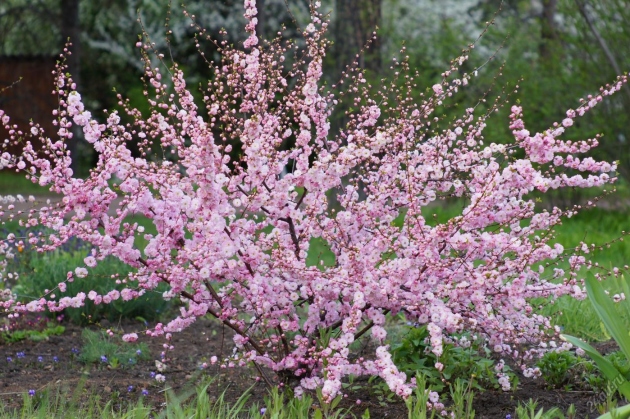
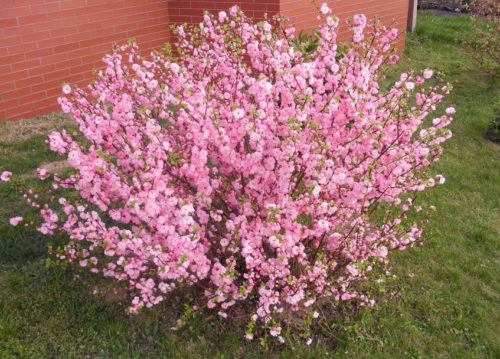
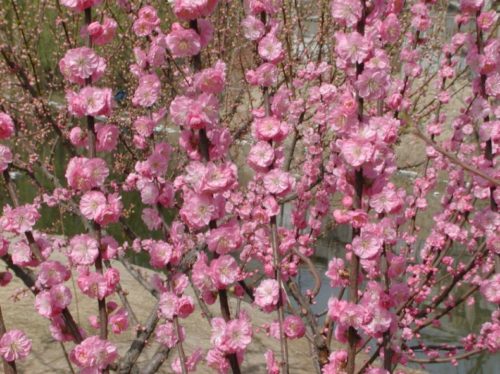
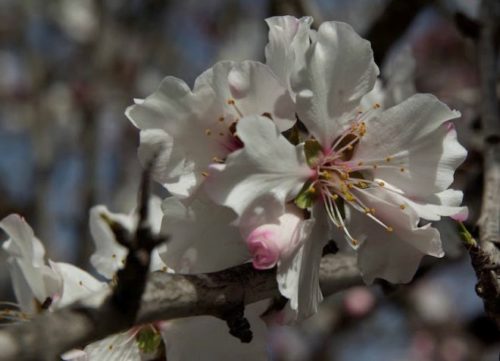

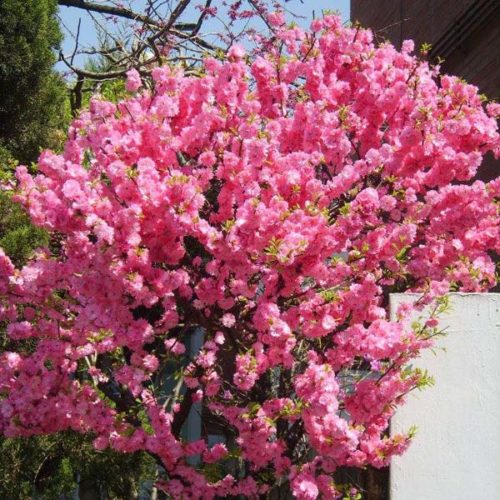
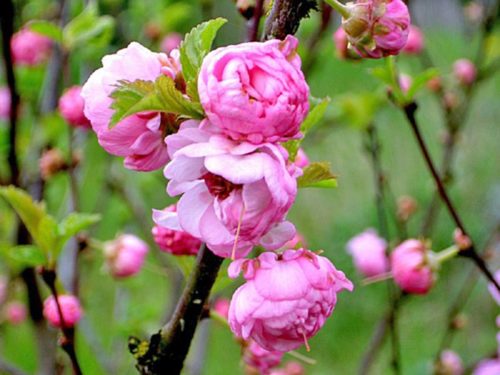
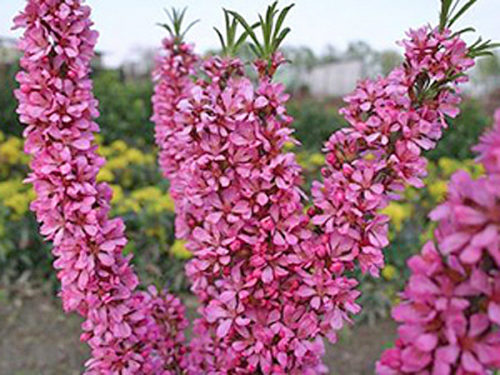
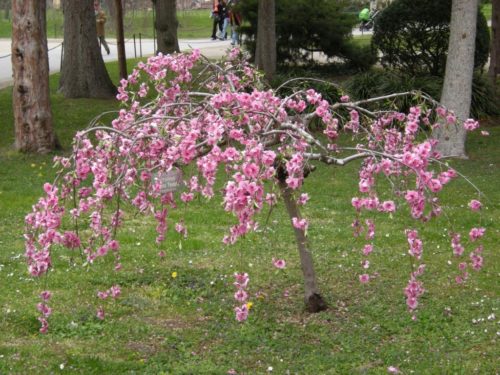
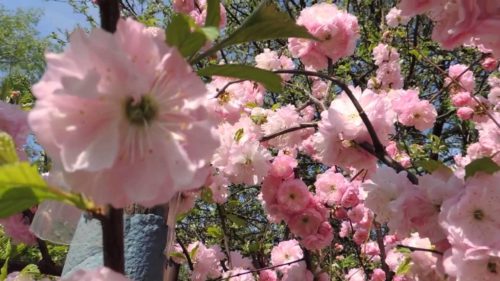

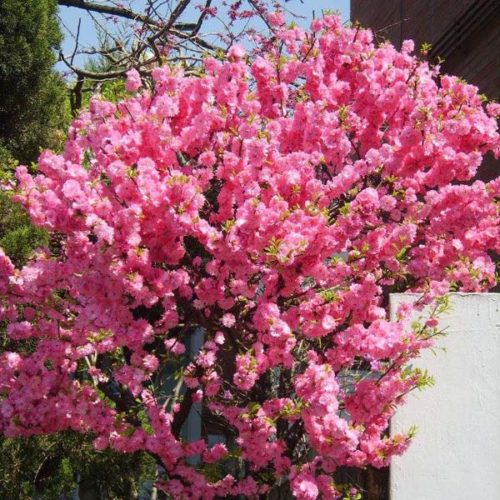
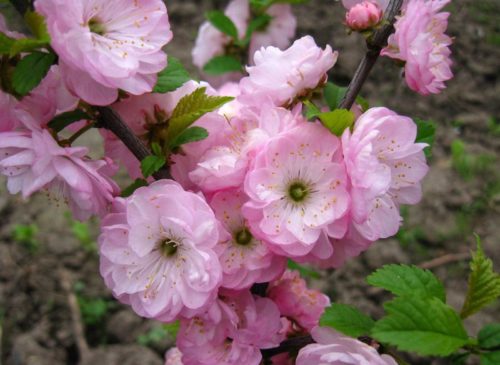
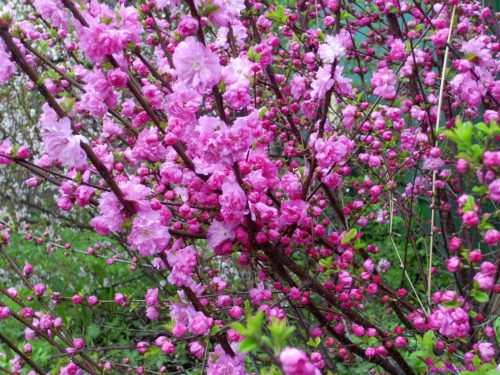
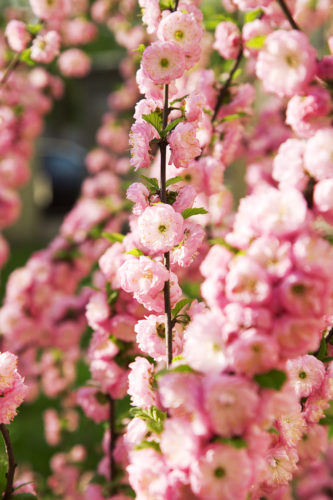
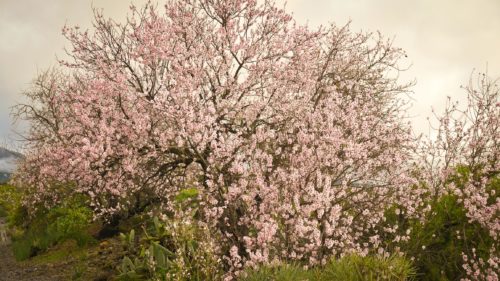
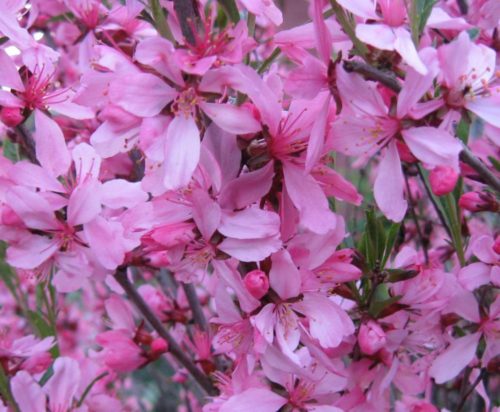
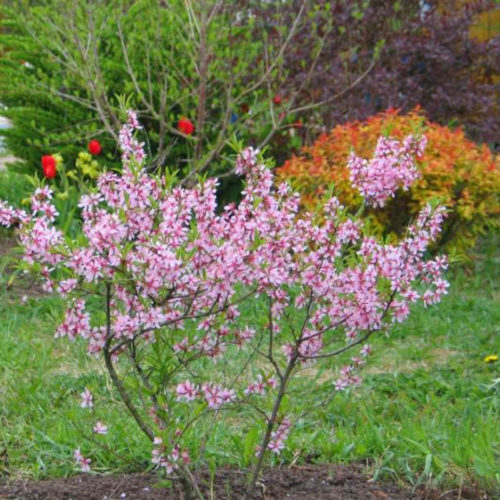
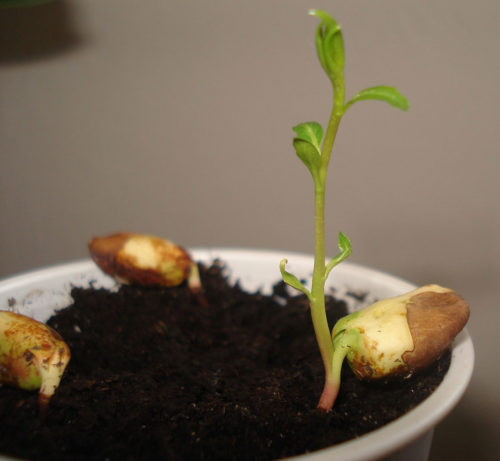
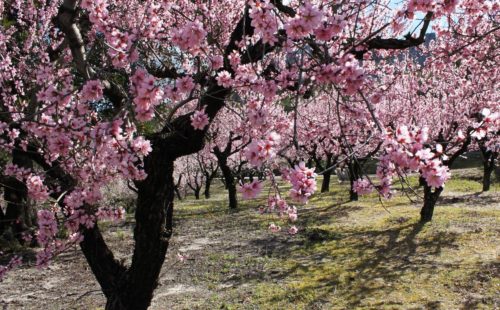
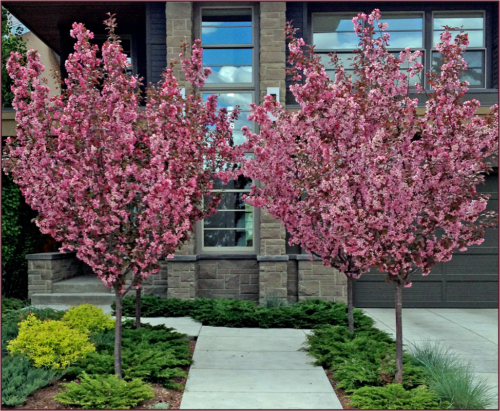
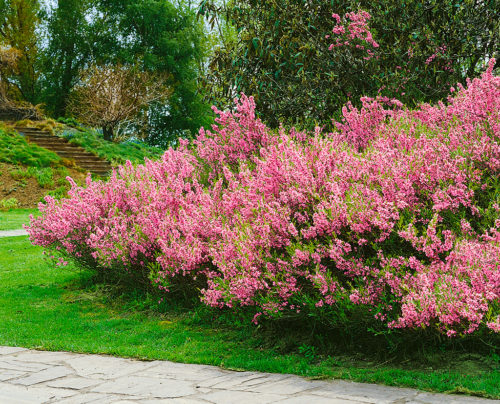














 Start a discussion ...
Start a discussion ...